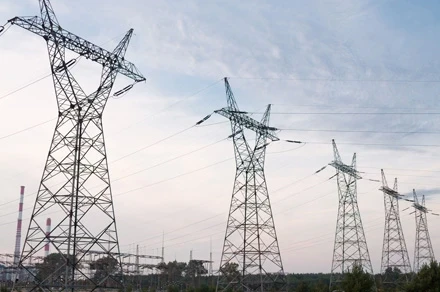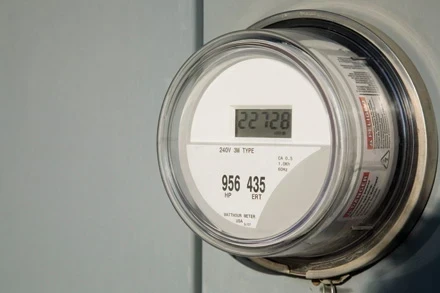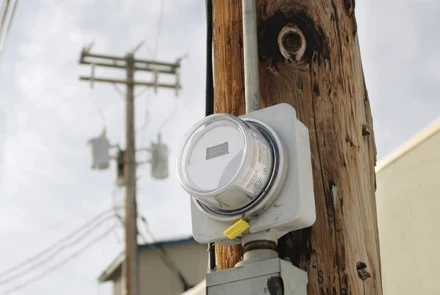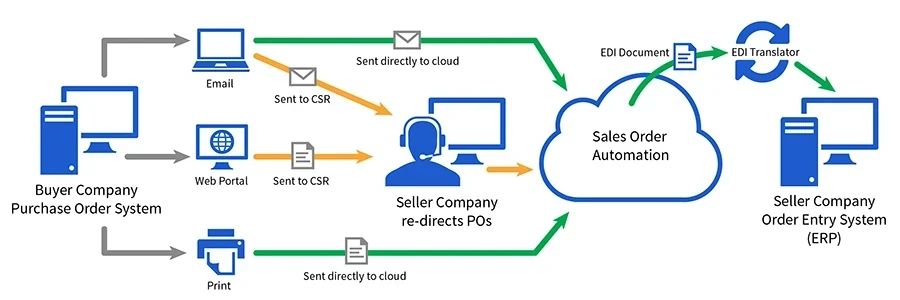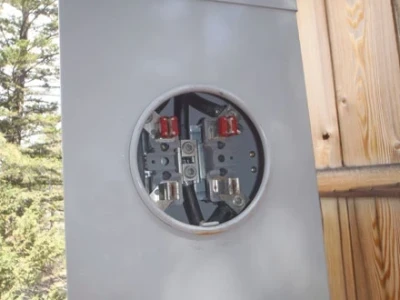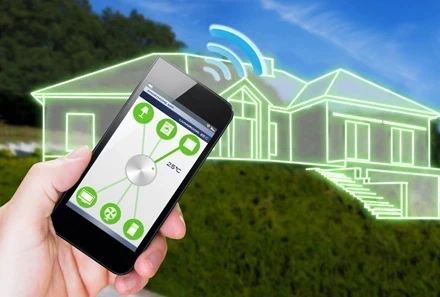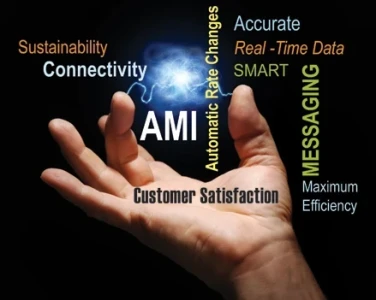Real-time Monitoring is Key to Reducing Energy Consumption

Empowering utilities to assist their customers
BY TIM VAN SLAMBROUCK, DENT Instruments
Energy utilities and consumers alike can benefit from continuous monitoring of energy usage, because monitoring is the key to identifying areas where consumption can be reduced, and significant cost savings can be had by controlling consumption at times when utilities’ generation resources are taxed the most. Some public facilities such as hospitals, universities and civic buildings are taking the lead in taking advantage of continuous energy monitoring.
For example, the University Hospital Authority & Trust (UHAT) operates seven medical office buildings on the University of Oklahoma’s Health Science Center in Oklahoma City. In early 2012, the hospital was contemplating some changes to upgrade their HVAC systems and install automated controls.
At the time, the building controls were a mix of disjointed pneumatic and direct digital control systems and UHAT facilities had no easy way of measuring the effects of energy conservation measures. For advice, they contacted Engineered Systems & Energy Solutions, Inc. (ES2) of Oklahoma City, a local energy solution provider and dealer for building automation systems.
ES2 proposed a comprehensive energy strategy focused on establishing a holistic solution that could unify the campus’ energy conservation projects. ES2 performed energy audits of the hospital’s facilities and proposed a strategic overhaul of the Building Automation System.
“The key component for any comprehensive strategy is a solid EM&V (evaluation, measurement, and verification) plan based on ability to measure energy use as it happens. Real-time performance data should drive decision making,” said Temur Akhmedov, Director of Energy Solutions at ES2.
ES2’s proposal included making the buildings “smart”, by networking the building’s energy-consuming components together, and providing a means for building occupants and facilities managers alike to monitor current consumption and assess the effects of energy-saving measures they wanted to put in place. Meters were expected to play a critical role in making the program successful.
Making energy consumption information available to exactly the people who can affect that consumption can be a key to achieving considerable savings. The missing piece to drive this behavior was supplied by UHAT, who challenged hospital personnel to a little good-natured competition.
CHOOSING A CONTROL SYSTEM
The overhaul implemented by ES2 included the installation of new building automation systems by Automated Logic Corp. (ALC). The ALC systems utilize BACnet, a data communication protocol for building automation and control networks that was developed under the auspices of the American Society of Heating, Refrigerating and Air-Conditioning Engineers (ASHRAE). Among the benefits of an industry standard interface is interoperability, whereby best-in-class system elements such as sensors, switches and motor drives can be interfaced with ease, and the ability of compatible devices to communicate is assured.
CHOOSING POWER METERS
In order to enable the system to monitor peak electrical demand in real-time, the company needed integrated submetering of the power consumed by each one of the UHAT buildings. For connectivity, ES2 needed capable devices that were BACnet ready and economical to use, since many measurement points were involved.
ES2 chose PowerScout 3 and PowerScout 24 meters by DENT Instruments of Bend, Oregon. “We implemented PowerScout 3 on all buildings across the campus at the main power feed level,” said Jesse Gentling, Account Manager at ES2. Available as either an Ethernet or serial device, DENT's PowerScout 3 is a single-point three-phase submeter that communicates using either BACnet or Modbus protocols.
For monitoring power use of individual building floors, a solution was needed that offered a lower cost per monitoring point. Jesse asked DENT for advice and the PowerScout 24 was recommended. The DENT PowerScout 24 is a multi-channel power meter that can monitor up to 24 different consumption points (one metering device could record power consumption by HVAC, lighting and outlet circuits on about two and a half floors in a UHAT hospital building). Like the PowerScout 3, the Powerscout 24 has a BACnet interface, providing access to live energy consumption data for each access point, showing how each building is performing. “The ease with which Automated Logic was able to link up with the PowerScout meters made for one of the smoothest integrations we’ve done,” said Gentling.
To further simplify installation of the submetering devices, the installers took advantage of DENT’s Rogowski coil current transformers (CTs). RoCoils make for easy installation of a monitoring point because they wrap around a conductor or bus bar without requiring the electrical feed to be disconnected.
Automated Logic’s control systems offer an operator interface called WebCTRL that can show at a glance the status of building control points and enable operators to make changes to system operation.
“The system also allows us to forecast based on instantaneous loads measured by the power meters,” said Gentling. “We did a highly-detailed analysis to show how changing control strategies would allow significant reduction in energy consumption.”
SUBMETERING EQUIPMENT IN ACTION
With the monitoring system in place, UHAT’s executive team in partnership with ES2 launched a behavior-based energy efficiency improvements campaign called “Save More than Lives”. The clinics’ medical staff members were encouraged to shut lights and computers off when not in use, as well as to review use of the medical equipment. A friendly competition between floors of two buildings was officially launched on November 1, 2013 after ES2 accumulated data for the baseline comparison.
Competition proved to be a great success with clinics proactively engaged in identifying ways to lower their energy use. “In just two months we saw a six percent reduction total electric consumption,” said Gentling. “Without sub-metering using the DENT hardware, we would have had no way of knowing which floor team was most successful.” The six percent decrease as a result of the campaign equals 45,000 kWh of savings.
The behavior-based energy conservation program is an integral part of a comprehensive energy strategy developed by ES2. Closely following ES2’s recommendations, in 2013 UHAT was able to cut its energy costs by over 22 percent when compared to 2012 baseline.
The State of Oklahoma mandates all state agencies to cut their energy use by 20 percent by 2020. Thanks to the installation of monitoring and control systems and some good-natured competition by building occupants, UHAT was able to achieve 20 percent cut in just one year! Partnership of UHAT and ES2 ensured that savings are sustainable long-term. The comprehensive energy strategy being implemented assumes an investment with a simple payback period of less than five years. “So far we’ve only attacked low-hanging fruit,” said Gentling. “With the next round of planned energy conservation measures we expect to gain further reductions.”
BENEFITS TO UTILITIES
Besides enabling energy consumers to save costs, the energy consumption-reducing changes that continuous energy monitoring allows them to help utilities. One key way is the reduction in energy usage at critical times during the day or in seasons when power generation resources are under heavy load. Some utilities have begun charging higher rates to larger consumers at times of the day when the load is heaviest. Wise consumption practices, enabled and enforced by the new generation of building control systems, can enable the existing power supply infrastructure to serve more consumers’ needs.
“UHAT’s experience proved that public institutions and commercial facilities could achieve sustainable energy efficiency targets with a comprehensive energy strategy based on capabilities and data from advanced controls and monitoring equipment. As the industry mantra goes, you can’t improve what you can’t measure”, said Akhmedov.

